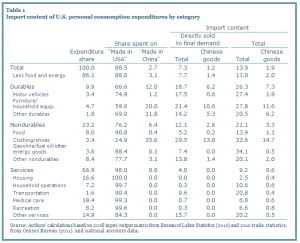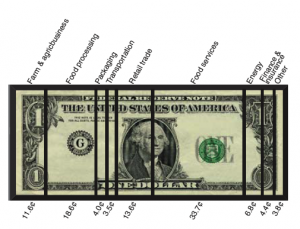The Village Discovers the “Jihadists” among Them
Steve Pearlstein is one of those pundits who reliably spouts the Village narrative, often to the point of wankery. Which is why I find his use of the language of terrorism to describe the TeaParty and the corporatists that empower it more significant than Joe Nocera’s use of the same language a few weeks ago.
Want to know who is to blame, Mr. Big Shot Chief Executive? Just look in the mirror because the culprit is staring you in the face.
J’accuse, dude. J’accuse.
You helped create the monsters that are rampaging through the political and economic countryside, wreaking havoc and sucking the lifeblood out of the global economy.
[snip]
My own bill of particulars begins right here in Washington, where over the past decade you financed and supported the growth of a radical right-wing cabal that has now taken over the Republican Party and repeatedly made a hostage of the U.S. government.
When it started out all you really wanted was to push back against a few meddlesome regulators or shave a point or two off your tax rate, but you were concerned it would look like special-interest rent-seeking. So when the Washington lobbyists came up with the clever idea of launching a campaign against over-regulation and over-taxation, you threw in some money, backed some candidates and financed a few lawsuits.
[snip]
What started as a reasonable attempt at political rebalancing turned into a jihad against all regulation, all taxes and all government, waged by right-wing zealots who want to privatize the public schools that educate your workers, cut back on the basic research on which your products are based, shut down the regulatory agencies that protect you from unscrupulous competitors and privatize the public infrastructure that transports your supplies and your finished goods. For them, this isn’t just a tactic to brush back government. It’s a holy war to destroy it — and one that is now out of your control. [my emphasis]
But what’s even more … amusing is the agency described here. Pearlstein suggests the few Big Shot Chief Executives he accuses here have, through organizations like the Chamber of Commerce and some front organizations, provided key funding and sanction for the radical right-wing cabal conducting this Holy War.
The more successful it was, however, the more you put in — hundreds of millions of the shareholders’ dollars, laundered through once-respected organizations such as the Chamber of Commerce and the National Association of Manufacturers, phoney front organizations with innocent-sounding names such as Americans for a Sound Economy, and a burgeoning network of Republican PACs and financing vehicles. And thanks to your clever lawyers and a Supreme Court majority that is intent on removing all checks to corporate power, it’s perfectly legal.
[snip]
It’s not just that you have remained silent as the financial sector has sucked away much of the profit generated by the private sector, stolen away much of the nation’s best talent and transformed the process of capital allocation and formation into a casino. Even worse, through organizations such as the Chamber and the Business Roundtable you reflexively provided them with crucial political support that allowed them to beat back regulators who tried to restrict their growth, curb their risk-taking or put a stop to the kind of fraudulent activity that nearly sank the recovery, and from which it will take years to recover. Given your role in society and in the economy, your silence amounts to complicity.
That is precisely the kind of action Pearlstein denied exists back during the last hostage-crisis–on the Bush tax cuts.
I know there are many Democrats and independents who believe that Republicans get up in the morning determined to do whatever is necessary to help their rich friends and campaign contributors. While that may explain some Republicans’ behavior some of the time, I strongly doubt it’s the primary motivation.
For starters, there is no American Association of Rich Persons out there with a huge political action committee and a formidable grass-roots lobbying effort. Yes, there are cabals of very rich people who fund conservative think tanks and political advertising. But American democracy is not so corrupt or dysfunctional that a tiny portion of the population, driven purely by selfish greed, can capture so many elected officials and bamboozle so many voters.
It seems Pearlstein has changed his estimation of the damage this association of rich people have done and the power they wield.
That’s important because something else has empowered these “Jihadists” over the last several years: Village pundits like Pearlstein, who dismissed the concerns of those of us who raised early warnings about them.
Mind you, Pearlstein seems to have little awareness of his own complicity here.
But if the Village wants to finally get around to shaming those who have looted our economy, I guess that’s progress.



